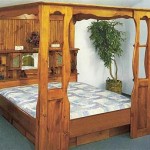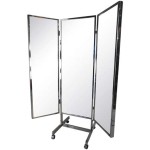Antique Mirrored Trays: A Reflection of History and Elegance
Antique mirrored trays, with their shimmering surfaces and intricate designs, are more than just decorative objects. They are tangible pieces of history, reflecting the craftsmanship and aesthetic sensibilities of bygone eras. From the opulent mirrored trays of the Victorian era to the sleek, minimalist designs of the Art Deco period, these trays offer a glimpse into the evolution of style and functionality. Their enduring popularity speaks to their timeless appeal and ability to elevate any space with an air of sophistication.
Origins and Evolution of Mirrored Trays
The use of mirrors in decorative arts dates back to ancient civilizations. Early civilizations, including the Egyptians and Romans, employed mirrors in their religious ceremonies and personal adornment. However, the widespread use of mirrored surfaces in furniture and decorative objects emerged in the 18th century, coinciding with the rise of the Rococo period. This era celebrated opulence and embellishment, and mirrored surfaces became a key element in achieving this aesthetic.
Mirrored trays, specifically, began to gain popularity in the Victorian era. During this time, technological advancements in glassmaking and silvering techniques allowed for larger, more intricate mirrored surfaces. Victorian trays were often adorned with elaborate carvings, intricate floral motifs, and gilded accents, reflecting the era's fascination with romanticism and craftsmanship. The Edwardian period followed suit, continuing the trend of intricate mirrored designs, often incorporating Art Nouveau influences. These trays often featured stylized floral patterns, geometric shapes, and delicate filigree work.
The Art Deco movement, which emerged in the early 20th century, brought a shift in design sensibilities. This era emphasized geometric shapes, clean lines, and bold colors. Mirrored trays from this period often featured simple, elegant designs, often with black and white accents or geometric patterns. They embodied the era's focus on functionality and modernism.
Materials and Techniques
Antique mirrored trays are typically crafted from a variety of materials, with each material contributing unique characteristics to the finished piece. Common materials include:
- Wood: Oak, mahogany, walnut, and cherry wood were popular choices for the frames of antique mirrored trays. These woods provided strength and durability, while also offering a beautiful natural grain.
- Glass: The mirrored surface itself was typically created using a process called silvering. This involved applying a thin layer of silver amalgam to the back of a sheet of glass. This process, while effective, was also delicate and required meticulous craftsmanship.
- Metal: Some antique mirrored trays feature metal accents, such as brass or silver, which were used for the handles, feet, or decorative embellishments. These metal accents added to the overall elegance and sophistication of the tray.
The techniques employed for creating antique mirrored trays varied depending on the era and the specific design. Traditional hand-carving techniques were prevalent in the Victorian and Edwardian periods, resulting in intricate and detailed designs. The Art Deco movement favored more streamlined techniques, often using geometric patterns and metalwork to create a modern and minimalist aesthetic.
Types of Antique Mirrored Trays
Antique mirrored trays come in a wide variety of shapes, sizes, and styles, catering to different tastes and decorative needs. Some common types include:
- Rectangular Trays: These are the most common type of antique mirrored trays and are ideal for serving cocktails, snacks, or showcasing decorative items. They can be found in various sizes, from small to large, and boast intricate designs and ornate frames.
- Round Trays: Round mirrored trays often feature a central handle and are perfect for serving meals, displaying flowers, or adding a touch of glamour to a coffee table. They come in various sizes and can be adorned with delicate floral patterns or geometric designs.
- Oval Trays: Oval mirrored trays offer a unique and elegant shape, adding a touch of sophistication to any space. They are commonly used for displaying decorative items, serving snacks, or holding toiletries in a bathroom setting.
- Wall Trays: Some antique mirrored trays are designed for wall mounting, offering a decorative focal point in a room. These trays often feature intricate carvings and decorative elements and can be used to showcase artwork, photographs, or other cherished items.
Antique mirrored trays are more than just functional pieces; they are conversation starters, reflections of history, and timeless accents that enhance any space with their elegance and charm. They are a testament to the enduring allure of craftsmanship and the pursuit of beauty that transcends generations.

Vintage Mirror Tray 2 Colors And Shapes Available Apollobox

Antique Mirrored Tray 2 Sizes Available Home Sweet Homeware Ltd

Branches Pattern Antique Mirror Rectangular Tray

Small Gilt Mirrored Tray

Antique Brass Mirror Trays West Elm

Small Gilt Mirrored Tray

Antiqued Mirror Tray With Handles Www Ellajames Co

Antique Brass Mirror Trays West Elm

Mirror Tray Vanity Mirrored Vintage Brass

Randa 22 Wide Antique Gold Mirrored Tray 3f633 Lamps Plus








